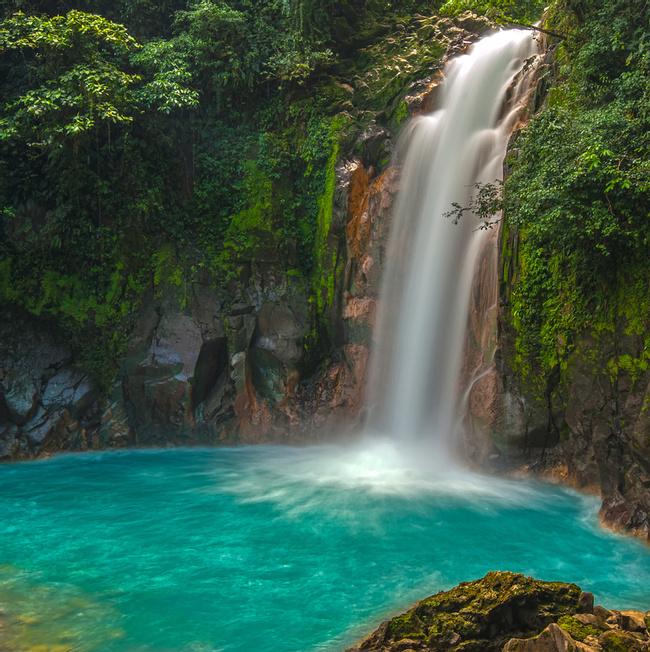- Travel Guides
Costa Rica Money
The Costa Rican unit of currency is the colón. Named after Christopher Columbus, the first European to visit Costa Rica, the colón has a value that fluctuates between 500-550 colones per 1 US dollar. The cost of travel in Costa Rica is higher than other countries in Central America, but is still significantly cheaper than in the U.S. or Europe.

History
The Spanish introduced the first real currency to Costa Rica in the 16th century. Known as pesos, these coins were originally manufactured in Spain and transported to Costa Rica, but were later minted in Peru after gold and silver mines were discovered here. The two original denominations – the golden “Escudo” and the silver “Real” – were used for exchanges, with the “Real” being used for most daily transactions.
Following Costa Rica’s independence from Spain in 1821, it joined the Federal Republic of Central America and adopted the Republic’s currency. After Costa Rica separated from the Republic in 1838, its currency again changed. The change was reflected in the coin design, which used coffee and tobacco symbols, the two main exports at the time. When the Republic of Costa Rica was officially declared in 1848, new symbols – a flag and a shield – were adopted and have continued to be used since.
In 1993, Costa Rica began printing the so-called “new currency,” which cost much less to manufacture. Still in use today, this currency consists of golden coins made of bronze coated steel, in addition to 5 and 10 colónes coins made from aluminum.
Stability
The only thing you need to worry about during your holiday in Costa Rica is enjoying yourself. Not only is the Costa Rican government stable, the nation is known as the most stable country in Central and Latin America. This stability carries over into Costa Rica's economy; you will have no difficulty accessing money in Costa Rica upon your arrival or departure.
Practical Matters
US dollars are widely accepted in Costa Rica, especially at upscale hotels and restaurants—some places even list their prices in US dollars to make it easier for international travelers. For smaller services (including local meals or public transportation), be prepared to pay with colónes.
Costs
Budget travelers can survive on around US$30 to US$40 a day. This covers basic transportation, lodging, and food. Rooms in budget hotels usually run around US$10 to US$20 per person and may include private or shared bathrooms. Meals at local restaurants (called sodas) usually go for around US$3 to US$4.
Midrange travelers usually spend US$50 to US$100 per person per day. Hotels in this range are more comfortable and offer a good list of amenities; these usually go for around US$30 to US$80 a night. Restaurants in this category offer meals for US$5 to US$10.
High-end travelers will find a number of upscale hotels and restaurants in Costa Rica. Nicer hotels start at around US$90 and are often found in more developed areas, although there are some impressive eco-lodges in remote destinations. Meals at the best restaurants begin at around US$20.
Hotels are generally more expensive during the dry season (December to April) and holidays, including Christmas, New Years, and Semana Santa.
Banks, ATMs and Money
Colones come in paper denominations of 1.000, 2.000, 5.000, 10.000, 20.000, and 50.000. Coins come in denominations of 5, 10, 25, 50, 100, 500. Older coins are silver and slightly larger than the newer versions. Most of the newer coins are gold-colored, except for the 5 and 10 colones coins, which are silver.
Expect little difficulty when it comes to exchanging money in Costa Rica. All banks will exchange US dollars and many will exchange British pounds or euros. Travelers checks can be cashed at banks or exchange bureaus for a commission of 1% to 3%. Some hotels accept travelers checks for payment, but many do not.
ATMs (known as cajeros automáticos) are widely available in Costa Rica. Some banks charge a fee for using an ATM abroad, so check with your bank before traveling to Costa Rica. Credit cards are widely accepted at midrange and upscale hotels and restaurants. Most credit cards include a transaction fee for international purchases.
Credit cards are widely accepted throughout the country, but there will still be occasions when only cash will do. We recommend reading our article "Are Credit Cards Accepted?" to learn when and where credit and debit cards are appropriate. This article will also help you better determine how much cash you may need throughout your trip.
Taxes and Tipping
There is a 13% tax on all purchases in Costa Rica, including souvenirs, food, and hotels. Hotels add an additional 3% tourist surcharge and most restaurants include a 10% gratuity fee. You are not obligated to tip on top of this, but it’s good practice to do so, because the 10% fee is split among many people. If you want to tip your waiter directly, leave more money on the table.
You may want to tip other people while in Costa Rica, including maids, bellhops, or drivers. Tips for these services usually range from US$1 to US$10 a day. Taxi drivers do not expect a tip.
It's more than just having a good time or visiting beautiful places (although that's absolutely a part of it!), it's about being part of a unique experience that stays with you.



